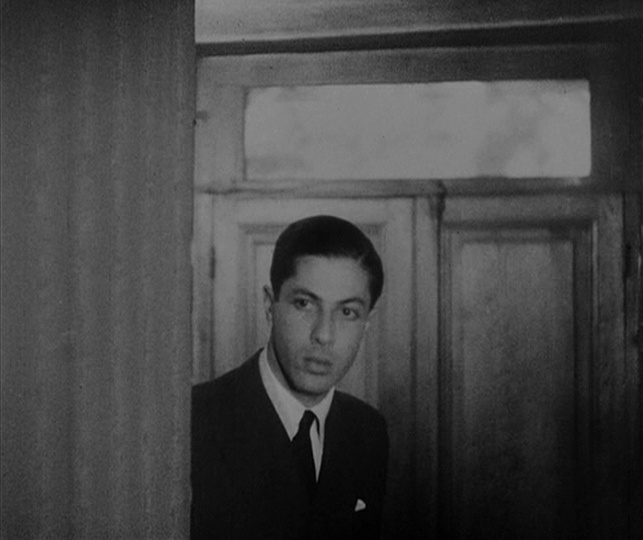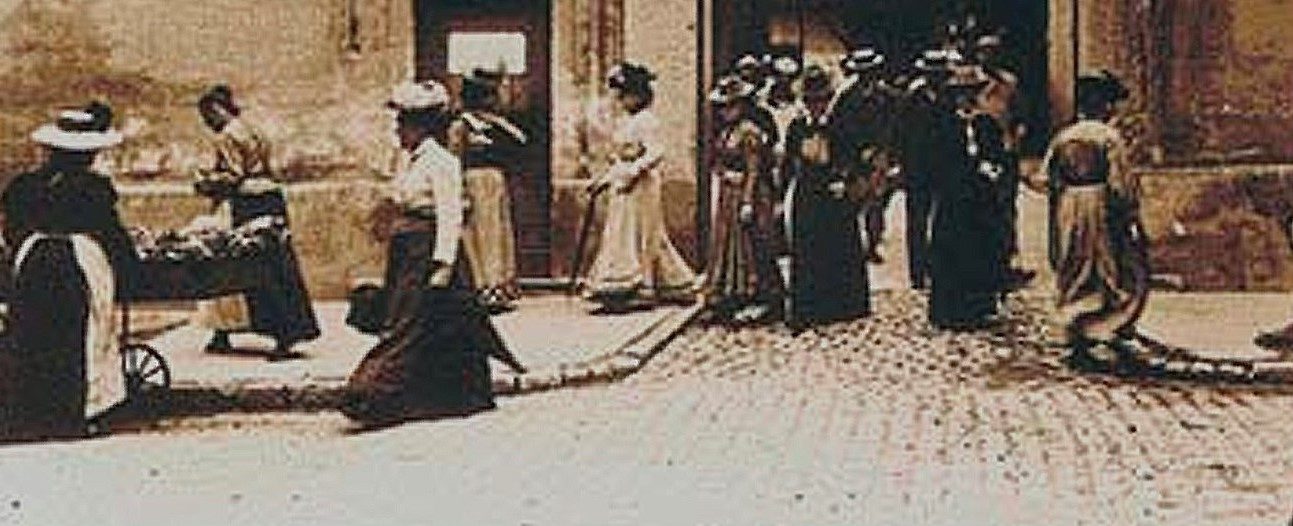Germany, France, 1932
Directed by Carl Theodor Dreyer
With Julian West (Allan Grey), Maurice Schutz (the manor’s owner), Sybille Schmitz (Léone), Rena Mandel (Gisèle), Albert Bras (the old servant), Jan Hieronimko (the doctor), Henriette Gérard (the vampire)

Even as the talking movies are slowly spreading, this is a typical silent movie, and a brilliant one. Long title cards explain a lot, even using a book to prod the plot to move along, nonprofessional actors perform with excess, the camera actually compounding the over-demonstrative posturing and emotion, for instance when some characters run across a garden shot in a slapstick-like fast forward motion, or when the camera focuses on the painful grimaces of the sick young woman falling prey to the vampire, Léone.
It is also from the beginning – that striking, perfectly framed image of a chilling old man holding a scythe, ringing a bell, revealing a death-like face – a movie showcasing gripping, awesome images, relying a deeply Expressionist and symbolic approach to the narrative, confident in the strength and the sophistication of the imagery it creates, but neglecting plot development, actually relishing abrupt editing, taking shortcuts to get right away at crucial and spectacular moments, for instance when an old servant employed by the old owner of a mysterious manor, finds the right tomb to take on the vampire at the center of the story, or when the young, distressed girl Allan Gray met in the manor, Gisèle, vanishes and then conveniently reappears to become his blissful lover.
The role of that book is interesting: it is the mysterious gift of the even more mysterious old man stepping into Allan Grey’s room in the creepy inn where the hero arrived unexpected and without explaining who he is and why he entered the room in the first place, a gift he left with the warning it could only opened if he dies. He does, in his manor lying across the lake near the inn, and the book turns out to be a treatise of the very subject the film has claimed to be its topic and proceeded to examine, vampires. In fact, the contents of the book so avidly read by Allan Grey slowly mirror what happens behind his back, and the movie plot whose hero he is becomes the faithful rendition of the fictionalized scholarship he is reading. A nod to the source of the film, a book by Sheridan Le Fanu (although director Carl Theodor Dreyer does not seem to have kept many elements from his novel “Carmilla”), the trick seems to root the strange adventure of Allan Grey into a wider and traditional folk belief and to play with the audience’s expectations about the legendary and devious creatures even as he imposes his own, purely kinetic and poetic vision on them.
The apex of Allan Grey’s tour in the uncanny comes as he runs again through a park, suddenly stopping by a bench, then slouching on it, with his body splitting in two, the one already sat seemingly dead while the one standing up is a ghost-like creature visually created by a superimposed image. The camera would now track the ghost of Allan Grey as it looks for Gisèle and try to gather what an odd and unpleasant doctor is up to. But what he finds in a derelict house is a casket with his own dead body inside and what follows is the funeral of this body, carried out under the aegis of the diabolical doctor, and shot in part from inside the casket. Yet as the casket is reaching a tomb, things change, the ghost-like Allan Grey merging with the dead one it left on the bench, the fully united and alive and kicking lead character rushing to meet the old servant just when the old men was about to do away with the vampire – what a timing, indeed.
The series of events and images are rather puzzling, hard to explain and to relate to the narrative as it has unfolded: this is as dramatic as it is rather incoherent, a thrilling but arbitrary development – why does Allan Grey’s body get split, how to reconcile the existence of a dead body on a bench and a lookalike in a distant house, how can it be related to the book’s depiction of dark powers and mysterious incidents? And yet the whole sequence is deeply unsettling but mesmerizing, boldly crossing the thin border between life and death, exploring a limbo-like, scaring, harrowing hereafter which is indeed the place where vampires lurk, as the book suggested, where evil stands ready to hurt the living innocents, and where heroes can feel powerless and doomed. This is a relevant, fascinating expression reaching deep into the nature of those devilish forces that scare us so much, challenge the narrative’s characters, and have obsessed so much Allan Grey himself, according to the initial title card. And this is a magnificent, haunting collection of striking shots showcasing the director’s constant efforts to craft a coherent, compelling, creepy imagery suiting his story.
This sequence also highlights how mobile Dreyer’s camera is and how adventurous his cinematography is too in “Vampyr”. The camera is now just following the moves and gestures of Allan Grey: it can pan next to him, or even just before him to survey the unsettling world he has stepped in, somehow capturing fresh troubling details even before his eyes catch them, opening further for the audience the gates of the hell he must face. The range of positions and angles it can take is remarkable, carefully chosen to lend even more dynamism and frenzy to the story. But this camera can be remarkably still and up close, taking intense closeups conveying superbly Allan Grey’s fear or anxiety, forcing the audience to grapple with his reactions with no possibility to turn their gaze away, feeling for instance as trapped and suffocating in a casket as he is.
Editing enhances the overall vivid, uncomfortable, and riveting impression of full dynamism and deep angst, till the final part, when a radical cross-cutting montage highlights how life and love prevail over evil and its myrmidons: while a row boat crosses the river away from death and back to a community looking now so ordinary and safe, the doctor is slowly dying, trapped in a mill, stifling under flour. This looks as a terrible but deliberately too spectacular punishment – but the contrast is visually admirable and comes as a righteous, comforting conclusion after the dread and the tension Dreyer’s “Vampyr” has displayed so far.

